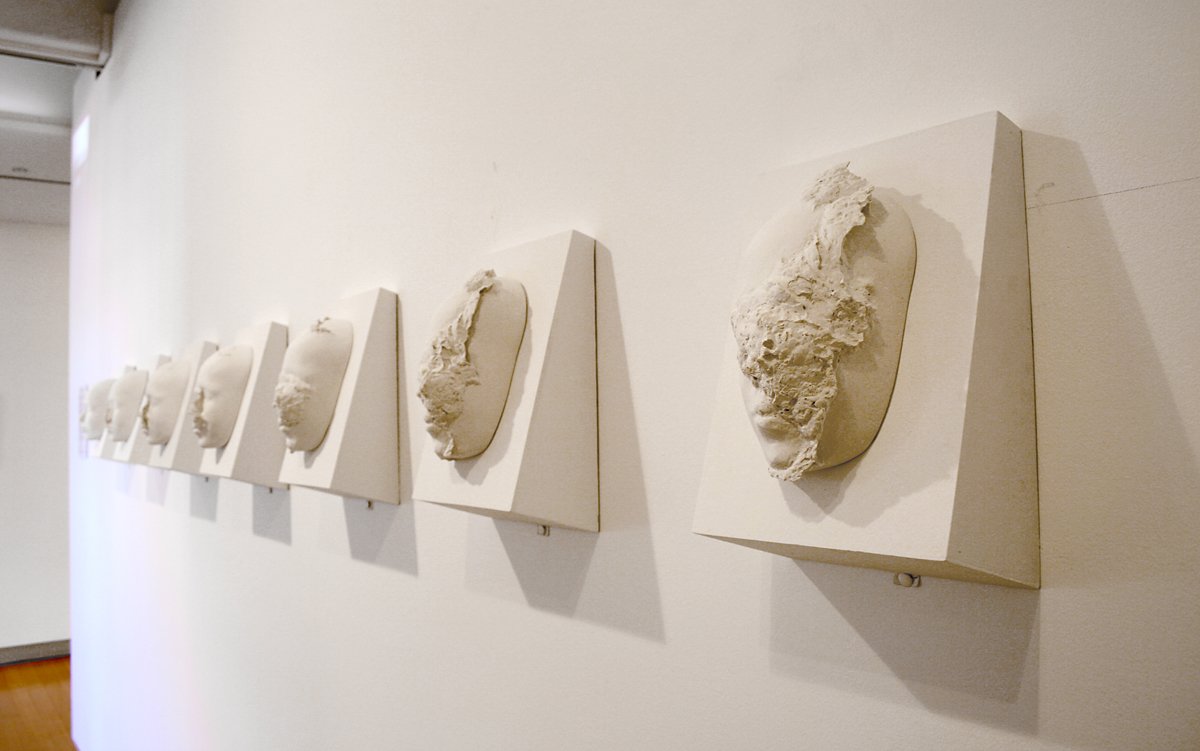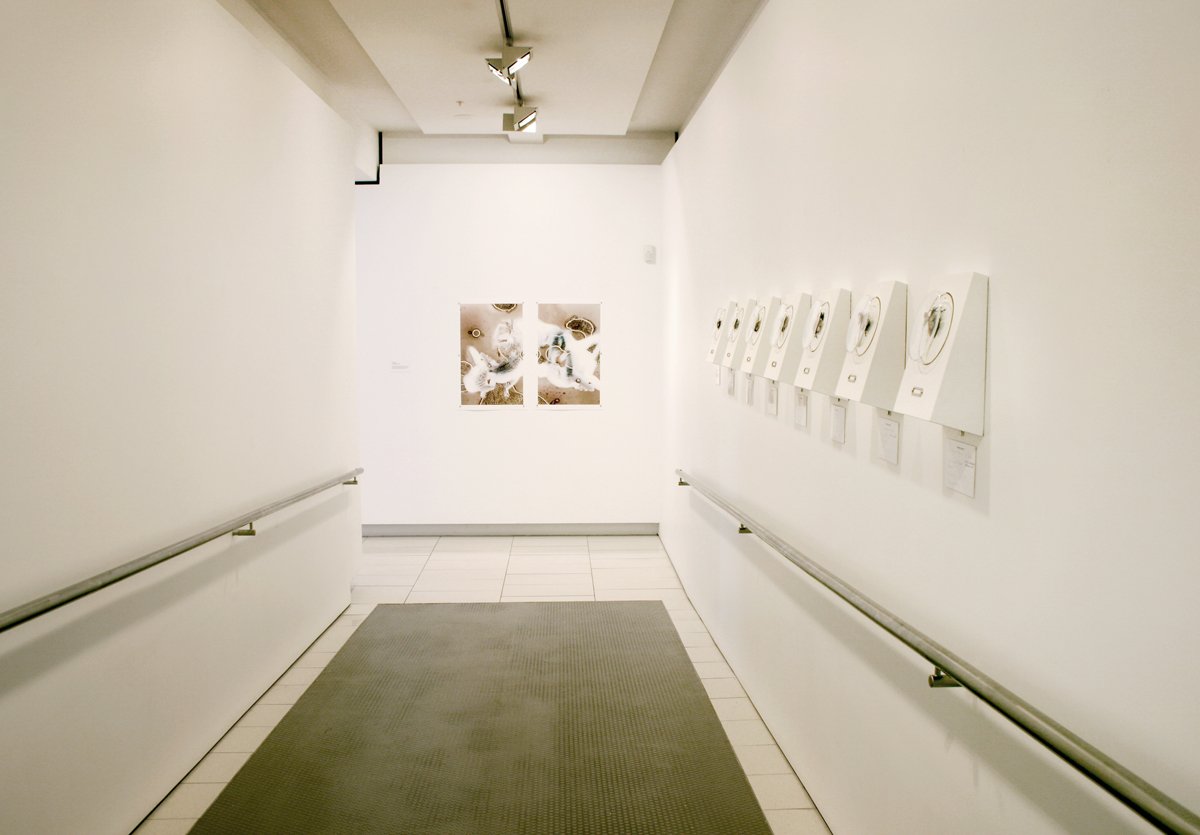The Absence of Alice #2
The Absence of Alice: Alice Ants and the Armyworm is the second instance in The Absence of Alice series by Svenja Kratz, exhibited at the QUT Art Museum in 2008. This iteration expands on earlier themes of transformation and the concept of becoming, initially explored through Saos-2 cells derived from an 11-year-old girl, Alice. The exhibition integrates new artworks that reflect on how the initial explorations with Alice’s cells ripple outward, forming new creative and biological connections. Key works, including Transition Piece #1 and Transition Piece #2, use materials like latex and Saos-2 cells to trace evolving lines and forms, directed by chance encounters and iterative processes.
A significant addition to this series is the exploration of co-culture between Saos-2 cells and SF9 insect cells. This biological pairing serves as a literal and metaphorical combination of human and insect, probing into interspecies relationships and the permeability of biological boundaries. By incorporating SF9 cells—derived from fall armyworms and often used in genetic and virological research—the work delves into mutual influence across species. The result is a reflection on cross-species “becoming,” where these cells illustrate how human and insect life can interact, modify, and even transform one another in shared biological spaces. This dynamic interplay embodies an ecosystem of continual adaptation, where life forms influence each other’s identity, challenging fixed notions of selfhood and highlighting an interconnected view of existence.
Another central piece, Death Masks, consists of 21 facial molds based on a young girl’s face, contemplating themes of death, transformation, and a symbolic connection to Alice. In Death Masks #3: Alice Ants, the vacuum-formed masks house live ants that had consumed a mixture of Saos-2 cells and sugar, effectively becoming “Alice Ants.” This integration of ants introduces the concept of "collective intelligence," drawing parallels between the ants' behaviors and cellular interactions, emphasising emergent properties and interspecies connections. The accompanying video, Ants Eating Alice, visually documents ants consuming the Saos-2 cell mixture, with superimposed time-lapse footage of the cells, underscoring the convergence of Alice’s legacy with natural processes.
Together, these works present a bio-cultural interconnectedness that bridges human and insect life forms within a shared habitat, reflecting a breakdown of boundaries between human-centric and more-than-human existences. Through its cross-species co-culture, the exhibition suggests an expanded view of Alice’s legacy—one that extends beyond human cellular confines to an interspecies network, mirroring natural symbiosis and the collective transformations that define life itself.
PROJECT PARTNERS: The Absence of Alice: Alice Ants and the Armyworm was developed in a creative partnership between The Institute of Health and Biomedical Innovation (IHBI) and The Creative Industries Faculty (CIF) at QUT, Brisbane (Aus). Completion of works would not be possible without the support from the Tissue Repair and Regeneration (TRR) Group and CIF technical staff. Special thanks to Dr Tony Parker, Dr Derek Van Lonkhuyzen and Jacqui McGovern from IHBI and visual arts technician Michael Riddle. Thank you to Prof. Anthony Clarke for specialist input regarding insects. Many thanks are also extended to: Dr Dan Mafe, Dr Courtney Pedersen and Prof. Zee Upton.












